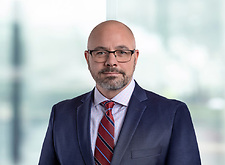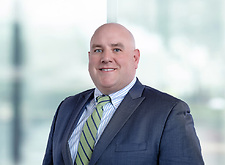Coronavirus, the Open Meetings Law, and Emergency Powers: A Brief Guide for Municipal Officials
In light of the public health threat from the spread of the novel coronavirus that causes COVID-19, municipal officials are contemplating delaying or cancelling board meetings, including zoning boards of appeals, planning boards, advisory boards, many of which include previously scheduled public hearings. They are also reviewing their local emergency powers as they contemplate responses to the pandemic, particularly in an effort to limit large gatherings. Below is an overview of recent actions and a guide to the revised Open Meetings Law options and available powers.
Background – the New Legislation and the Committee on Open Government Pronouncement
Shortly after the first New York coronavirus case was confirmed, on March 3, the State Legislature overwhelmingly approved legislation expanding the emergency powers of the Governor and expanding the definition of disaster under Article 2-B of the Executive Law (although not without some criticism on the rushed manner in which an expansion of the Governor’s powers was handled). Specifically, L. 2020 ch. 23 (S.7919):
1) broadened Executive Law § 20(2)(a)’s definition of disaster to include “impending or urgent” threats from a variety of causes, and added “disease outbreak” to the list of qualifying disasters. The provision already included “epidemics.”
2) expanded the Governor’s emergency response powers by allowing the issuance by Executive Order of “any directive during a state emergency ... necessary to cope with the disaster and may provide for procedures reasonably necessary to enforce such directive.” The Governor already had broad authority to suspend laws that could hinder or delay the state’s response to a disaster.
The new law, which also appropriated $40 million towards Coronavirus response efforts, sunsets the new definition and powers on April 30, 2021.
In the Governor’s first Executive Order under the new provisions, he suspended the in-person and quorum requirements required by the Open Meetings Law (OML) for certain public health entities. Almost immediately, the Committee on Open Government (COG) began receiving requests for opinions on whether the OML permitted deviations as a result of the COVID-19 outbreak, or if waivers could be granted from its provisions, particularly the requirement of in-person public meetings. The statute already permits board members to join meetings and vote by video conference, in limited circumstances where notice is provided identifying the remote location, and where that site is accessible to the public.
On March 9, 2020, the COG issued guidance stating that the Legislature “did not contemplate the potential need for exceptions to the ‘in-person’ requirement for any covered entity when crafting the OML,” and that the COG had no authority to grant waivers. The guidance went on to note that no court had addressed the issue, but the COG staff believed the court would take into account the public health threat in reviewing any municipal action outside the bounds of the OML. But the staff went on to recommend that “if any public body determines that limiting public in-person access to an open meeting is necessary given the current public health threat addressed by the Order, the staff of the Committee encourages those bodies to limit discussions and actions taken to those matters for which harm would be caused by delay in order to mitigate potential impact on constituents.”
What Did the Governor Do?
In his modified Executive Order addressing the coronavirus threat, the Governor directly addressed the OML issue and provided greater relief through April 11, 2020 (unless further extended):
"Suspension of law allowing the attendance of meetings telephonically or other similar service:
Article 7 of the Public Officers Law, to the extent necessary to permit any public body to meet and take such actions authorized by the law without permitting in public in-person access to meetings and authorizing such meetings to be held remotely by conference call or similar service, provided that the public has the ability to view or listen to such proceeding and that such meetings are recorded and later transcribed."
In creating exceptions to the OML while preserving the public ability to listen to proceedings, the Governor has given municipalities four options for holding meetings:
1) The traditional OML compliant in-person attendance by board members at a public location with public attendance at that site.
2) Also following the OML with public attendance at a public location, but with some or all of the board members using video-conferencing from a site where the public can also attend.
3) A meeting can be conducted entirely by conference call. In this case there is no in-person location, but provision must be made allowing the public to listen to the conference call.
4) And finally by use of video-conferencing, again with no in-person location, as long as the public can watch the video-conference online.
Under the first two alternatives, which follow the current OML, no transcript beyond regular minutes need be made. But if either of the two new “nobody at the public meeting” alternatives are employed, a recording must be made of the meeting, and afterwards a transcript must be provided to the public. Note that the Executive Order specifically says a transcript must be provided not a mere minutes-type summary normally created. It thus becomes very important for the board members to identify themselves when speaking, and if input is received from the public (for example a presentation by a zoning applicant) the board should ask the speakers to identify themselves.
What the Governor Did Not Do
Although the Governor has authority to similarly suspend any local law governing meetings, he did not do so. Thus communities which have adopted local rules establishing meeting protocols about public participation thus must continue to follow those local rules, unless relaxed by the Board or through the emergency process described below.
Nor did the Governor change the requirements for public notices, but notices for meetings barring the public must say so clearly, as well as provide instructions on how to listen or live stream meetings. In such situations it would be a good practice to allow comments to be received for a period of time after the public hearing at a specified email address (or a general address but using a specific subject line), to allow additions to the record through written submissions, and that information should also be included in the public notice.
Can we cancel our regularly scheduled board meetings and public hearings? A Review of Emergency Powers
While state law covers many issues on setting meeting time, place, subject matter and the public’s role, there are no general provisions on cancelling meetings. Obviously the boards that set a meeting can adjust the schedule, but meetings for such action may not be prudent. We recommend municipalities consider employing their emergency powers under the Executive Law to address these and other situations that may arise.
In 1978, the Legislature determined that express legislation was needed to “mobilize the resources of individuals, business, labor, agriculture and government at every level—federal, state and local—for effective organization to prepare for and meet natural and man-made disasters of all kinds.” New York Executive Law Article 2-B was thus enacted to help local communities “prevent, meet, defend against and recover from” disasters. As noted above, while Executive Law § 20 already included epidemics in its description, disease outbreaks is now also recognized.
The key section here is Executive Law § 24, which authorizes local declarations of a state of emergency, with specific examples as a guide. Specifically, in the event of a qualifying disaster or reasonable apprehension of immediate danger to the public safety, the municipal chief executive has the authority to declare a local state of emergency and issue orders to protect life and property or to bring the emergency situation under control. The declaration of a local state of emergency by proclamation, which should be in writing, should include the date, time, and reason for the declaration, specify the area involved, and it should note the expected duration (it can be up to 30 days). The proclamation must then be kept on file in the municipal or county clerk’s office, and copies sent to the Department of State and the Office of Emergency Management. The local state of emergency remains in effect until the proclamation is rescinded, or for 30 days, whichever occurs first. Extensions in 30-day increments of the state of emergency are permitted.
Once a local state of emergency is declared, the chief executive can issue local emergency orders (it can be done as part of the proclamation of the emergency). Examples include: (1) establishing a curfew; (2) designating zones within which the occupancy and use of buildings or ingress and egress of vehicles and persons may be prohibited or regulated; (3) closing places of public assembly; (4) prohibiting and controlling the presence of persons on public streets and in public places; (5) establishing emergency shelters; and (6) suspending local laws, ordinances, or regulations—subject to limitations—that may prevent, hinder, or delay disaster response. Local emergency orders terminate five days after issuance, by rescission of the chief executive, or by declaration that the state of emergency no longer exists, and as with the declaration itself, can be reissued as needed with the emergency period. And these orders carry a bite — any person who knowingly violates any local emergency order is guilty of a class B misdemeanor.
For our purposes in this crisis, emergency orders can be used to cancel meetings and hearings of any municipal board, and take other appropriate steps, such as limiting public assemblies.
Beware the Default Approval/Denial!
One aspect not changed by the Governor are timelines creating default approvals. For example, the default approval time periods in Town Law § 276(8) “may be extended only by mutual consent of the owner and the planning board.” Nothing in the Governor’s Order stops that clock, and the local executive’s emergency powers are limited to “any of its local laws, ordinances or regulations, or parts thereto.” Executive Law § 24(1)(g). There are also many local laws with default timelines, for example those setting time periods by which a planning board must report its recommendation or a project is deemed to be recommended for approval. To address these situations we recommend any emergency order consider the following language:
"I hereby issue an emergency order that all local laws, ordinances, or regulations providing for deadlines for action of any board are hereby tolled during the pendency of this State of Emergency. Pursuant Section 24(2) of Article 2-B of the Executive Law this Order shall be in effect for five days."
Less concerning, in our opinion, are those state law provisions requiring public hearings to be held with 62 days of a public hearing, such as Town Law § 267-a(8) (zoning boards of appeal). Noncompliance here does create a default approval and an applicant’s remedy – seeking a court order mandating the board make a decision – is likely to take longer than sorting out any reasonable emergency-based delay.
What about scheduling emergency meetings?
Nothing in the new legislation or Executive Orders changes the powers and procedures relative to calling emergency meetings. The four options for holding meetings described above apply to emergency meetings. What’s important to remember is the rules about notice in OML § 104 are still in effect. As the COG has pointed out, nothing in the OML “refers specifically to 'emergency’ or ‘special’ meetings. However, the judicial interpretation of the Open Meetings Law suggests that the propriety of scheduling a meeting less than a week in advance is dependent upon the actual need to do so.” “Whether abbreviated notice is ‘practicable’ or ‘reasonable’ in a given case depends on the necessity for same.” Previdi v. Hirsch, 138 Misc. 2d 436, 437, 524 N.Y.S.2d 643, 645 (Sup. Ct. 1988).
The OML requires that for meetings scheduled less than a week in advance, “Public notice of the time and place of every other meeting shall be given or electronically transmitted, to the extent practicable, to the news media and shall be conspicuously posted in one or more designated public locations at a reasonable time prior thereto.” Public Officers Law § 104(2). As the COG pointed out (somewhat presciently):
"It is not difficult to accomplish compliance with §104; notice of the time and place of a meeting can be given to the news media by email, fax or phone; notice can quickly posted in one or more conspicuous public locations; and when it is feasible for an entity to do so, notice can be posted on the entity’s website without delay. That is often done, particularly by educational institutions as a means of informing parents and others of delays due to weather, health consideration due to an outbreak of a disease, social events and the like."
Finally, emergency meeting agendas should of course be limited to true emergency items.
Questions?
If you have questions on options available or need assistance drafting emergency orders or local legislation, contact a member of the please contact a member of Hodgson Russ’s Municipal Law Practice.
Featured
- Partner
- Partner
- Partner
- Senior Counsel
- Partner
- Partner
- Partner
- Partner
- Partner
- Partner
- Partner
- Partner
- Partner
- Partner
- Partner
- Partner
- Partner
- Partner


















